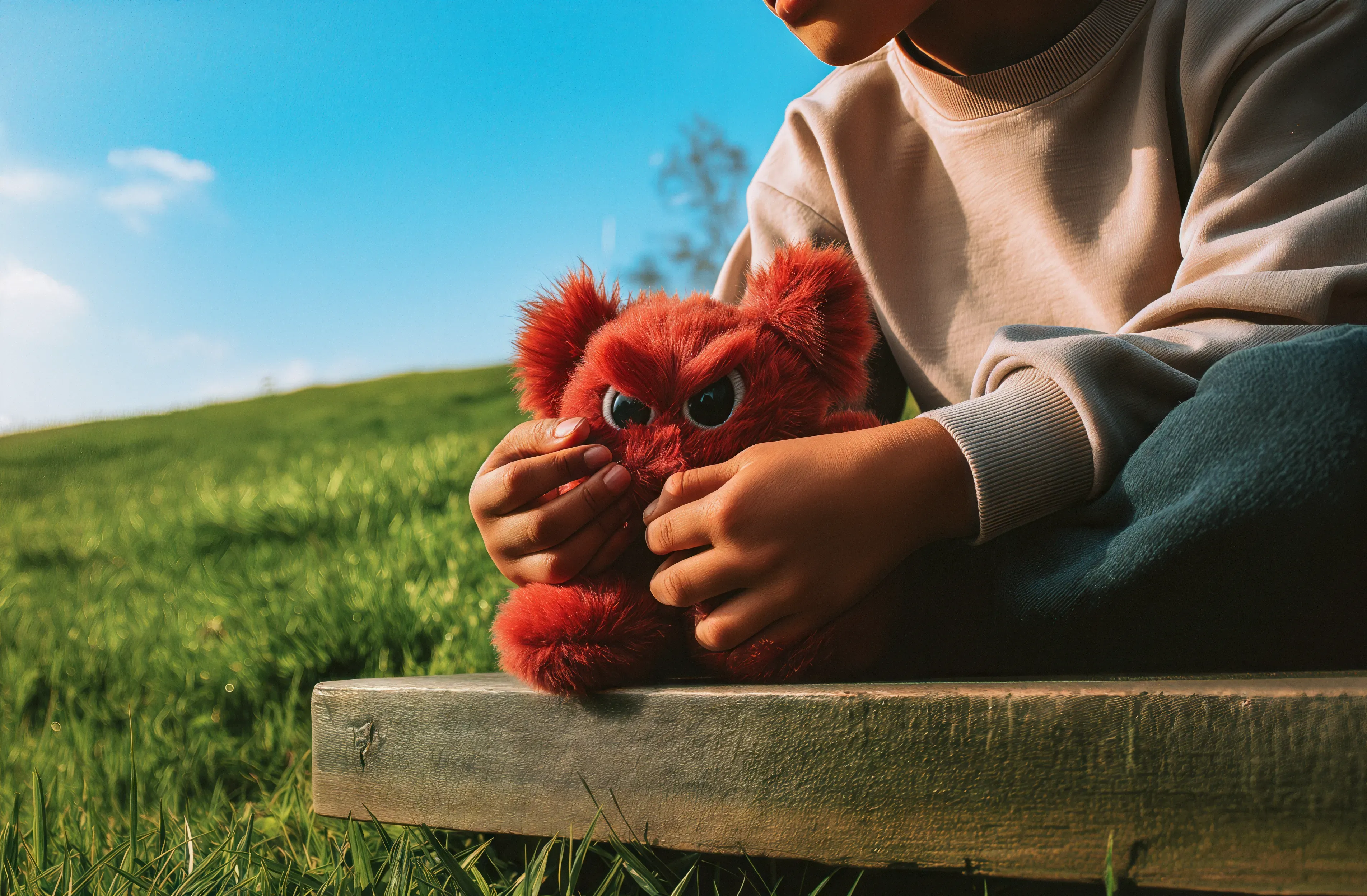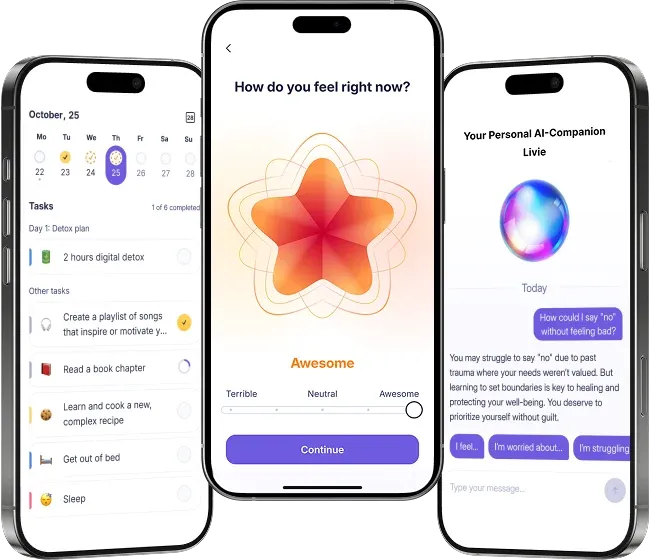How to teach children to manage anger

Many parents face situations where their child reacts sharply to prohibitions, disappointments, or fatigue. Children's outbursts can vary widely: from angry silence and loud shouting to slamming doors or throwing toys. This is especially normal at a young age between 2 and 5 years – after all, self-regulation skills are still developing. Some cry from hurt feelings, some clench their fists, and some leave for another room. All these manifestations are part of emotional growth, and adults' task is to teach them how to deal with them constructively. Anger is a natural emotion whose regulation varies among children based on their biological makeup, upbringing, experiences, and environmental factors. Therefore, it's very important that adults can help children understand their emotions and teach them to express them in safe ways. Problems arise precisely when a child lacks the skills to control frustration in healthy ways. Then, even an ordinary situation can turn into a serious argument or tears.
To help children consciously respond to such states, specialists use a term that emphasizes teaching emotional self-control.
This approach is often called "anger management for kids". It assumes that we teach kids to consciously recognize and express their feelings safely. Recognizing emotions is a skill that takes time and practice to develop, and not all children acquire it easily. We help children gradually learn to notice: "I'm mad now," and understand what constructive actions they can take. For example, techniques include full breathing, positive phrases ("I can handle this!"), and role-playing games, where children learn to let off steam with words rather than hits. Such training reduces the frequency of irritability outbursts and frustration.
Kids and anger: When anger is normal and when it's a problem
As the CDC writes, "a child's wrath issues are not just normal but also a useful emotion" that can tell children when something unpleasant has happened that violates their expectations or sense of fairness. The American Psychological Association also emphasizes that any manifestations of wrath, from tantrums in young children to intense reactions in teenagers, are a natural part of a child's emotional development. Therefore, it's important not to fear the feeling itself, but to teach children how to control it properly and sustainably.
Nevertheless, in some cases, inappropriate behavior may go beyond the norm. If outbursts become regular, accompanied by aggression toward self or others, or lead to constant conflicts at home and school, this signals that the behavior may need deeper attention. In such cases, it would be wise to seek consultation with a psychologist or pediatrician. At the same time, parents can gently implement useful daily practices that will help children develop self-regulation skills.
Most often, children's irritation has specific causes. Children often get angry from ordinary fatigue, hunger, frustration with difficult tasks, disrupted daily routines, or sudden changes in familiar surroundings. For example, even seemingly ordinary events like being asked to finish a favorite activity or conflict with a friend can trigger strong emotions in a child. Instead of dismissing these reactions, it's important to discuss them and figure out what exactly upset them. And after that, suggest how the child can cope with such feelings in the future. If you notice that your child often gets irritable or cranky before lunch, try warning them: "In five minutes we'll be sitting down to eat, you have time to finish your game or choose which toy to bring with you." This gives the child time to adjust and reduces the likelihood of emotional outbursts.
Sometimes, intense emotions are related to developmental characteristics (ADHD, anxiety, learning difficulties). Children with such characteristics may react more strongly to stress, especially in situations requiring concentration and effort, for example, when doing homework or getting ready for school in the morning. Here, problem-solving skills together come in very handy: it's important to explain to children how to complete tasks step by step, or give them a choice - do the exercise now or rest a bit.
If anger becomes constant, loud, and dangerous, don't hope it will "resolve itself." Seek professional advice and support. Fortunately, even in such cases, "the best solution is to learn skills together with parents": specialists recommend attending family therapy or support groups where adults also learn to react properly.
Teaching children emotions: learning to recognize and name feelings
The first crucial step in anger control strategies for kids is developing emotional awareness. According to recommendations from the Child Mind Institute and the American Psychological Association (APA), it's essential to teach kids to recognize, label, and understand their own emotions. Start during the preschool years with simple explanations in everyday life: "Look, that child feels frustrated because their toy broke." Or: "See how happy they are because they built a tower!" Or: "They seem angry because they couldn't join the game." These teachable moments help kids comprehend the connection between events and emotions, developing their social-emotional learning skills.
When young children develop skills to recognize the signs of emotional outbursts, they take their first step toward managing their emotions. Teaching kids to express their feelings verbally - like saying "I feel mad" - creates a natural pause for impulse control. But it's important to pair this with concrete actions they can take, such as squeezing a stress ball or going to their calm corner. This combination of naming feelings and having clear next steps helps children feel more in control. This simple practice helps them process their frustrated feelings and choose better coping skills. This simple practice helps them process their frustrated feelings and choose better coping skills. Try easy exercises together: watch cartoons and discuss different emotions the characters feel, why they occur, and how they handle them. Play emotion-guessing games using facial expressions, voices, or situations. These social skills activities help children develop their emotional vocabulary and better understand themselves and other children.
It's particularly helpful to teach kids to recognize bodily signals of anger. Observe together how their bodies react in different situations. Most children gradually notice physical signs of wrath - tense shoulders, clenched fists, or tight muscles. Over time, they might recognize an increased heartbeat or internal tension before feeling overwhelmed. When kids develop new skills to identify these early warning signs, they can better manage their wrath using tranquility techniques: taking deep breaths, finding a quiet space, or seeking adult help.
Adult support is crucial at this stage, as parents help children cope with emotions they don't yet fully understand. One key approach is co-regulation. Mental health experts from Harvard University emphasize that during intense emotional moments, children shouldn't be left alone: a calm adult can help them process their feelings, regain composure, and feel safe. Stay settled and balanced throughout these episodes. If the child is open to physical comfort, hold them, gently rub their back, and speak softly. Your calm demeanor will help the child settle down, and gradually, they'll learn to transform their irritable behavior into more appropriate responses.
Parenting Tips: Guide for Parents
Anger control strategies for kids are not a one-time effort but a daily process involving the whole family. Parents play an especially important role in helping children learn emotion regulation: they set the emotional tone at home, show kids how to control frustration and stress, and teach them coping skills for difficult emotions. Everything adults do - from their behavioral intervention strategies to how they reveal wrath and resolve conflicts - becomes a model for early learners to follow. Therefore, it's important not only to support the child but also to be mindful of your behavior and feelings words. Below are key tips for parents based on modern clinical psychologist recommendations in social emotional learning and behavioral problems:
Remain calm during anger outbursts.
When kids are irritated, their emotional state can easily transfer to adults - tension builds in the air, and parents may start feeling overwhelmed. This is a normal part of parenting, especially if you're tired or anxious yourself. However, it's in these educational moments that adults can help children learn emotional control. Try to stay settled and avoid angry behavior in response. If you feel your own emotions taking over, breathing deeply: a few seconds of silence gives you a chance to return to a safe environment. Respond to your child's frustration issues with a tranquility voice, understanding that most kids need help managing their aggressive behavior. When adults respond with consistent consequences and support, they show children how to manage anger without mad outbursts.
Positive reinforcement matters more than time-outs.
Typically, children respond well to praise for good behavior rather than timeouts, for instance, when they use slow breathing to soothe themselves, or when they express irritation appropriately by saying, "I feel mad." This shows communication skills development - the child hasn't just acted on their feelings, but has chosen healthy emotional regulation skills while maintaining impulse control. Contingent praise helps kids understand their efforts are noticed, strengthens their ability to manage various emotions, and encourages children to apply these skills again. Meanwhile, harsh consequences often provoke other feelings like fear or resistance. Instead of focusing on when your child acts out or throws toys, support them when they show emotion regulation - these are crucial moments in their emotional literacy.
Clear rules and consistent consequences.
During the formative years and beyond, it's important to establish clear tools to guide behavior strategies and communicate which actions are unacceptable (like acting out or angry outbursts). Discuss what underlying issues might trigger anger and what consequences will follow. Guide children to understand not just limitations, but why these rules create a safe space. When dealing with underlying problems, maintain stable and consistent responses - this helps children acquire knowledge and predictability. Therefore, always follow through with agreements about problematic behavior. Most children are sensitive to discrepancies between words and actions, and your consistency helps them develop emotional control and trust.
United team for mental health.
It's crucial to align approaches between parents, school staff, and other adults who help kids control irritation. Children should see consistent responses to their different emotions from everyone in their lives. This creates emotional stability and helps kids gain an understanding of appropriate ways to express anger. Everyone around the child, at home, school, or in other environments, should use similar approaches to both positive behavior and situations requiring gentle intervention. This way, children develop skills with clear expectations and won't face confusing situations where the same emotions are handled differently in different places.
Quality time for emotional growth
This simple yet powerful practice builds strong emotional regulation of emotions skills with your child. Even 10-15 minutes of focused time daily, without distractions, creates opportunities for teaching kids about feelings. Such regular moments allow parents to help children process various emotions through play, conversation, or other activities where they're fully present and attentive. The key is creating a caring and calm space free from interruptions. For example, make it a norm to ask: "What would you like us to do together?" These special times strengthen mental health, reduce feelings of frustration, and help kids feel secure, especially when they're learning to control irritation or other feelings.
Additionally, it's helpful to agree and discuss an action plan for when anger arises. In a peaceful setting, discuss: what to do if someone takes away a toy, or when it's time to go to bed. Teach children to choose strategies: count to ten, take deep breaths, go to a quiet place, or tell an adult about their feelings. This way, you jointly develop working "instructions" for crises.
Emotional Support in Action: Exercises and Games for Anger Management
For young children to learn to manage their own emotions and develop self-control, it's not enough to just understand frustration issues. Parents and clinical psychologists emphasize the importance of teaching kids specific behavioral intervention strategies that help them cope with angry feelings in everyday life. Through repetitive practices, many kids gain understanding of emotional balance: first through play under adult supervision, then independently. These can be short exercises, clear emotional words, or pre-discussed actions — anything that helps kids learn to control irritation in a safe environment. Such methods are especially effective when implemented during teachable moments in a calm setting, so the child better absorbs these heart and mind learning experiences.
- Deep breathing exercises for anger management. Teaching kids controlled breathing is one of the most effective ways to help children practice and improve emotional control when they feel irritated. Demonstrate it: conscious breathing together, counting to 4 on inhale, then 6 on exhale. Explain how this helps the body switch from angry emotions to settled behavior. Support with phrases like "Let's stay calm and do deep breathing together" or "See how each breath helps control irritation?" Over time, most kids develop these coping skills for independent use during irritability outbursts.
- Positive reinforcement through affirmations. Help your child work through different feelings using supportive emotional words. This helps young children stop aggressive behavior and find a peaceful state, rather than letting mad outbursts escalate. Simple phrases like "I can manage anger" or "These feelings will pass" help kids gain an understanding of how to handle their emotions. Regular practice helps children learn positive self-talk instead of feeling frustrated or overwhelmed.
- Role-playing for social skills development. In a caring and tranquil space, act out scenarios where children might experience frustration issues, like when other children take toys or refuse to play. Let the child act out both aggressive behavior and appropriate ways to reveal anger through words: "I feel angry," "Please stop that." These support strategies for behavior help kids learn they have choices in handling a variety of feelings.
- Managing transitions with consistent consequences. Many children find it challenging to switch activities, especially during the preschool years. When children feel their normal part of life is disrupted, mad behavior often follows. Establish clear management of difficult behaviors through the "five-minute rule" - warn about upcoming changes. Give choices: "We're ending playtime soon - would you like to clean up now or take three more turns?" This helps kids develop new skills to handle transitions without throwing things or having irritability or outbursts.
- Creating a caring and peaceful space for learning to remaining calm. Designate a special space for mental health and developing self-regulation. Include comfort items like stress balls or soft toys. Teach kids that when they experience ire, this space helps with underlying issues. When ready, offer support: "I'm here while you work through these feelings." These areas provide good behavior reinforcement when young children can't yet fully control their anger.
In mental health professional recommendations for parents, simple emotion monitoring systems often help: "red light" shows mad emotions, "green light" indicates settled behavior. Create this together and display it where school and home caregivers can see. When kids feel grumpy, they can indicate their emotional state - this helps adults decide whether to suggest time-outs, taking deep breaths, or using their calm space.
When Professional Help is Needed for Behavioral Problems
While many children eventually develop emotional literacy skills, seek help if anger remains intense or dangerous. According to the Centers for Disease Control and Prevention (CDC), indicators for professional behavioral intervention include frequent angry outbursts in older children and uncontrollable aggressive behavior. A therapist can help identify underlying problems: sometimes, when children experience ire, it may indicate other emotions like anxiety or depression.
Final word
Remember: self-regulation is a skill that develops over the years. As psychologists note, children's planning, concentration, and emotional control skills continue to develop up until adolescence. Therefore, this is a very important and delicate process that requires a consistent and patient approach not only from parents but also from the main environment. The key is to remember that even if progress seems insignificant, each of your supports contributes to the development of self-regulation skills. It's important to show your child that you are there, that you hear them and love them, even when they're struggling to cope with themselves. Hugs after an argument, a kind attitude, and sincere belief in their ability to handle feelings are much more effective than strict lectures.
Dealing with anger requires ongoing effort and family involvement. Here are the key strategies for helping children manage their emotions:
- Understanding Emotions
- Recognize that anger is a natural emotion
- Learn to identify physical signs of anger
- Practice naming and expressing feelings
- Practical Techniques for Self-Control
- Take three deep breaths – "Balloon breathing"
- Count slowly to 10
- Use positive self-talk – "I can handle this"
- Find a quiet space – "Cool-down corner"
- Positive Affirmations for Kids
- "I am in control of my feelings."
- "I can stay calm when things don't go my way."
- "It's okay to feel angry, but I know how to calm down."
- "I can solve problems peacefully."
It's also important to remember, children grasp better from examples than from words. Therefore, parents should not only teach the child but also demonstrate healthy ways of responding to stress, irritation, and fatigue themselves.

